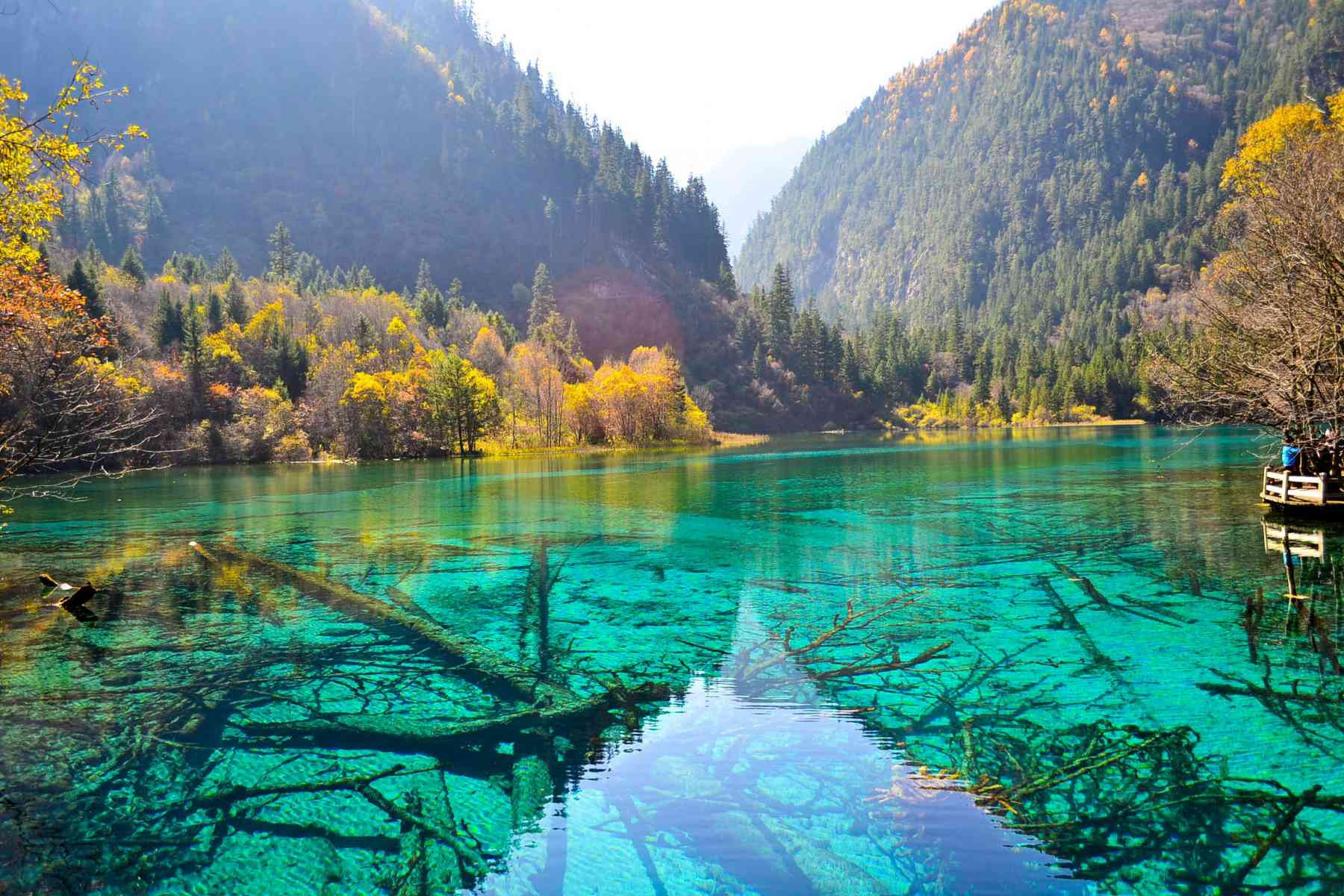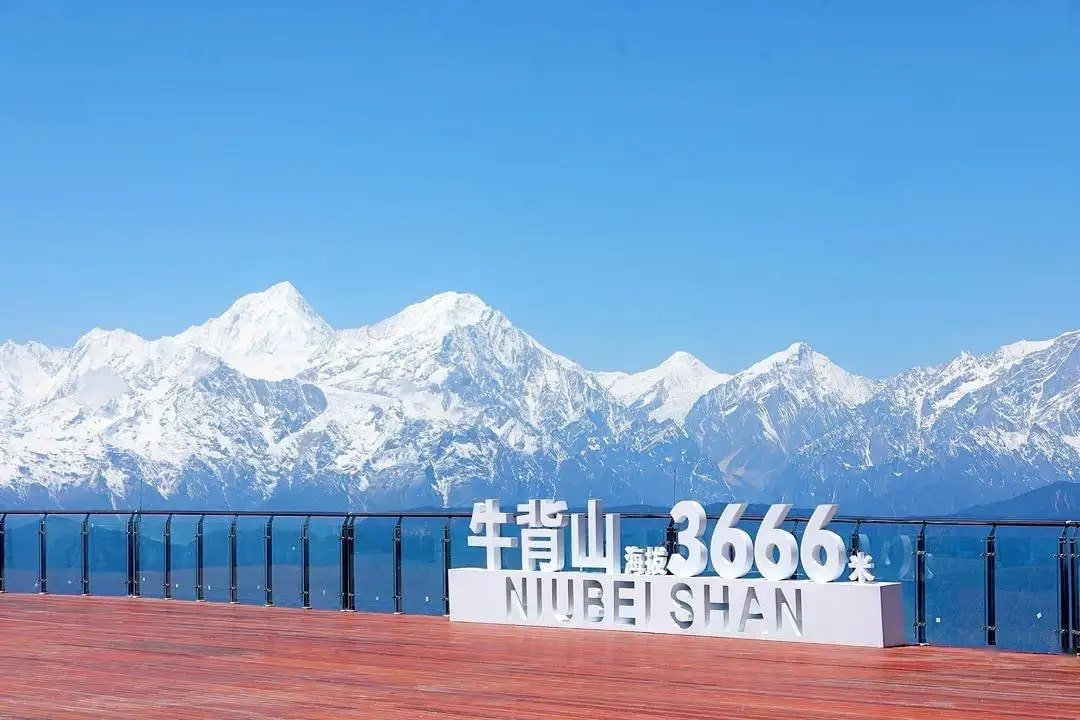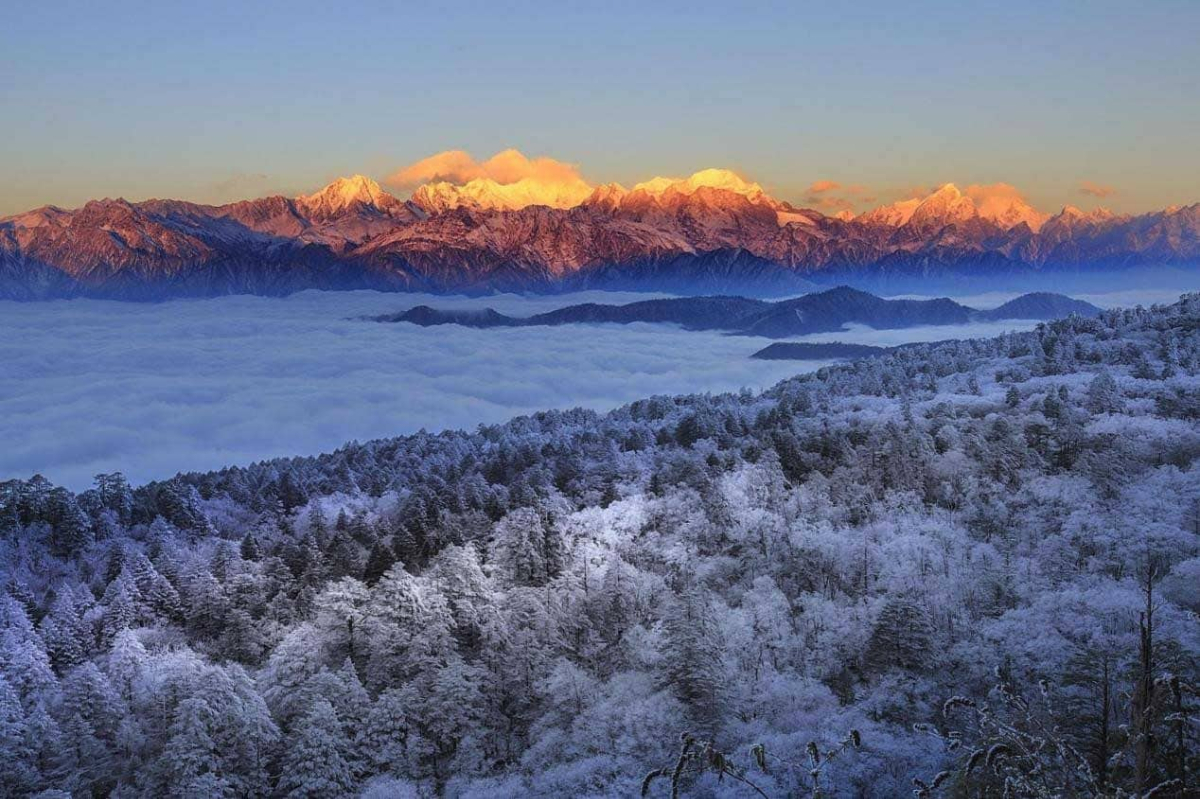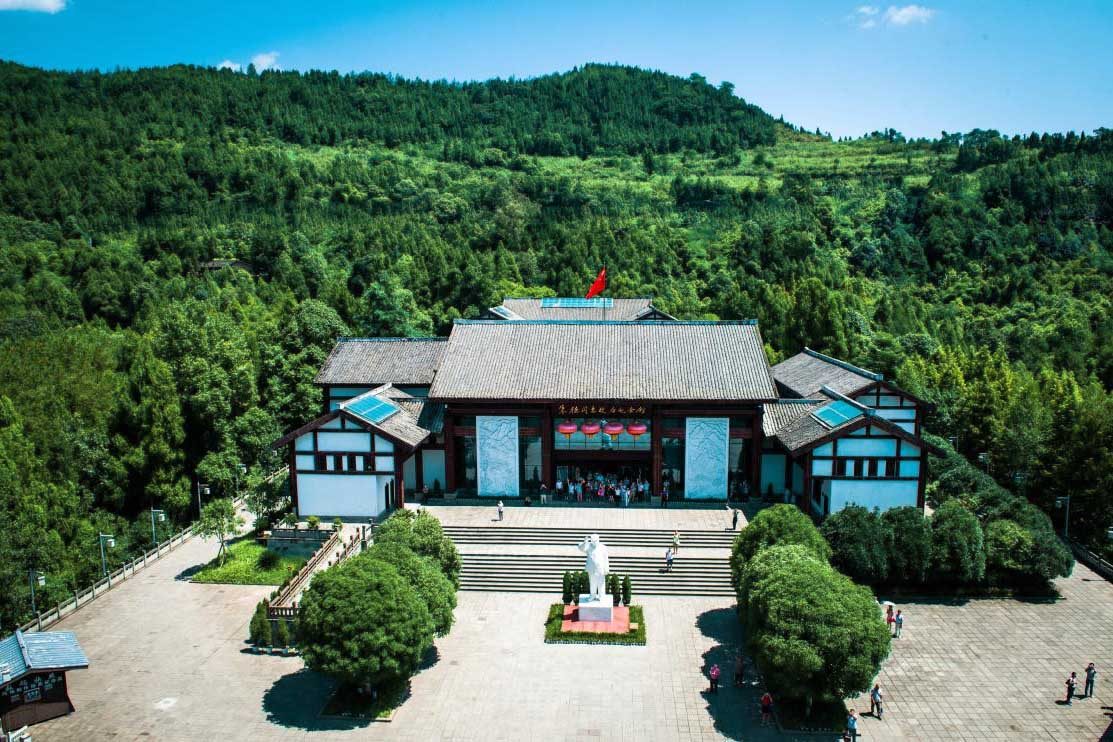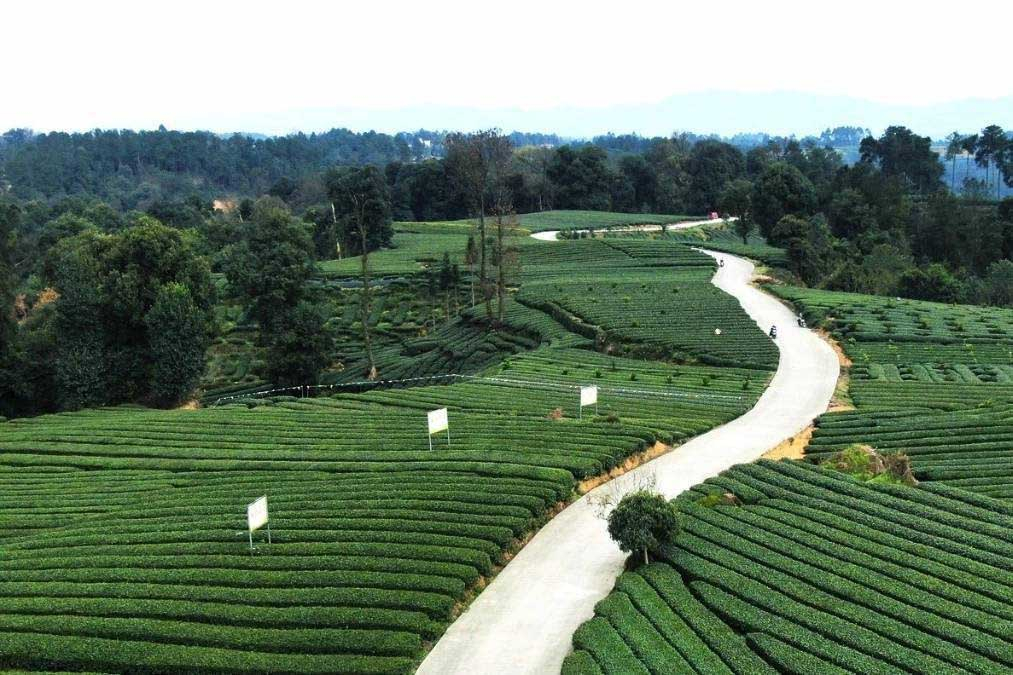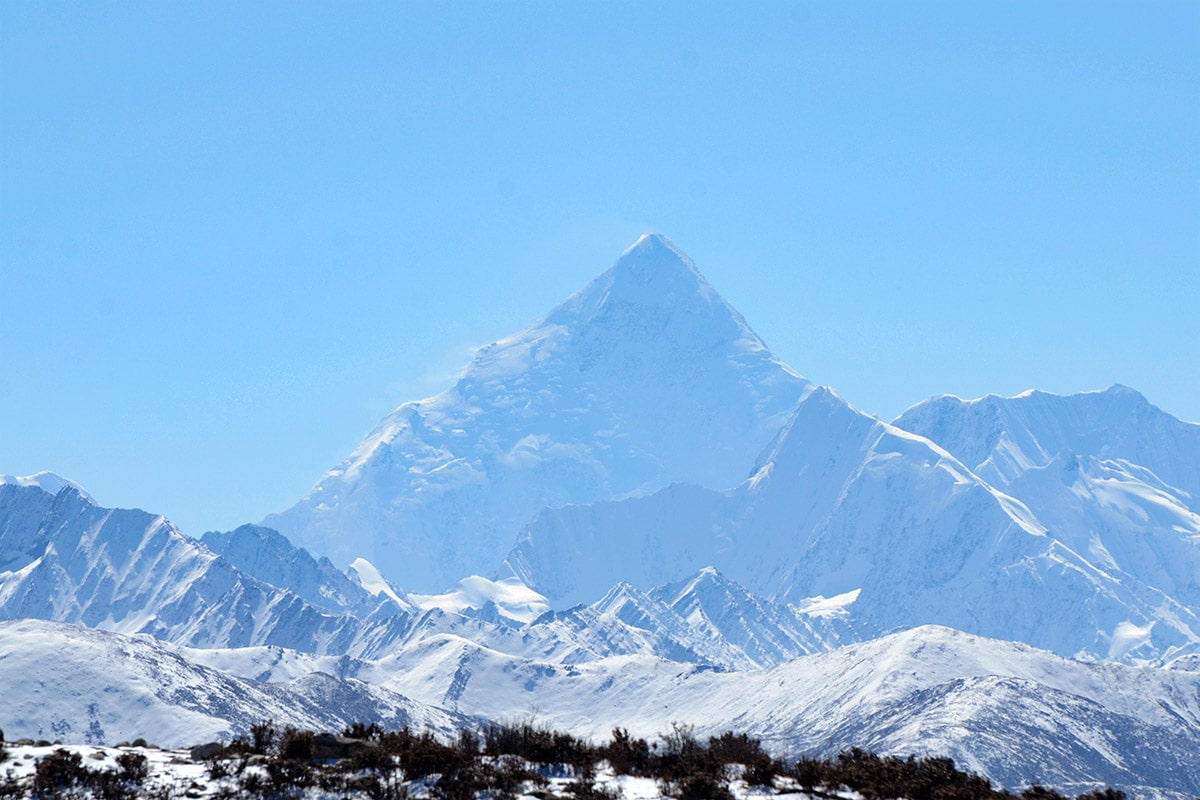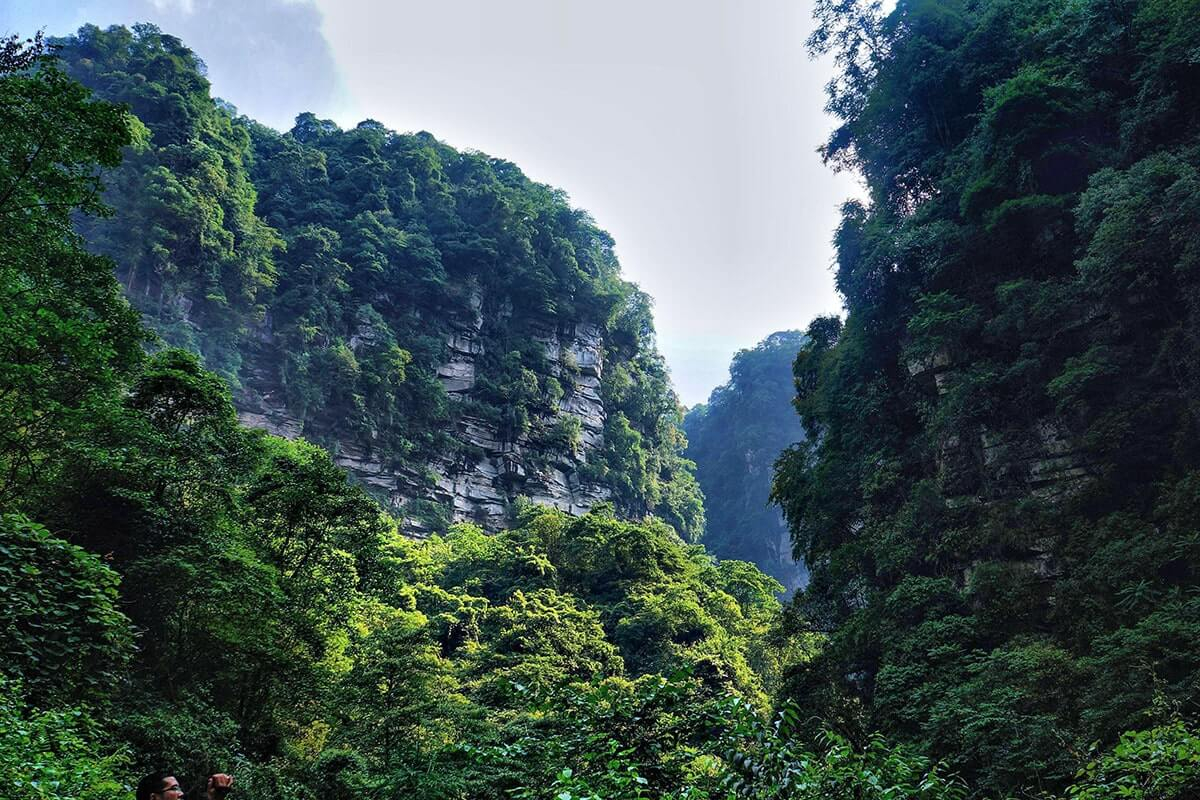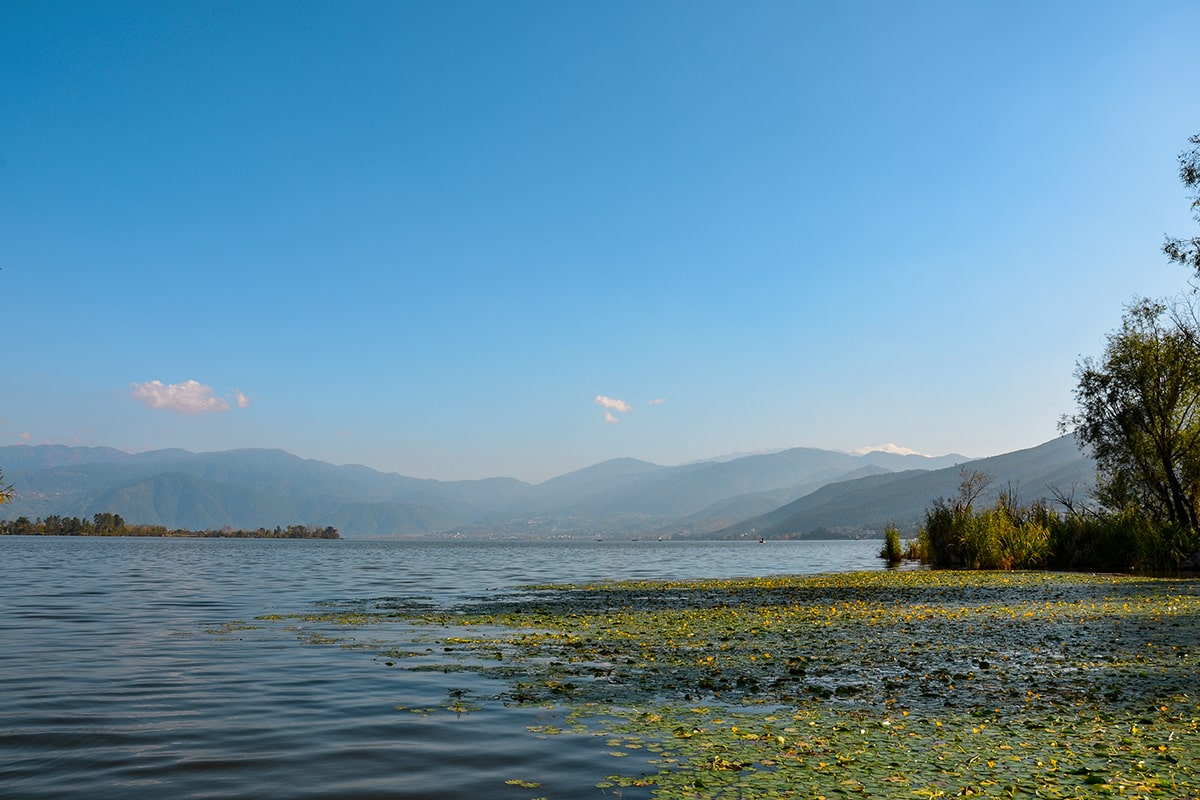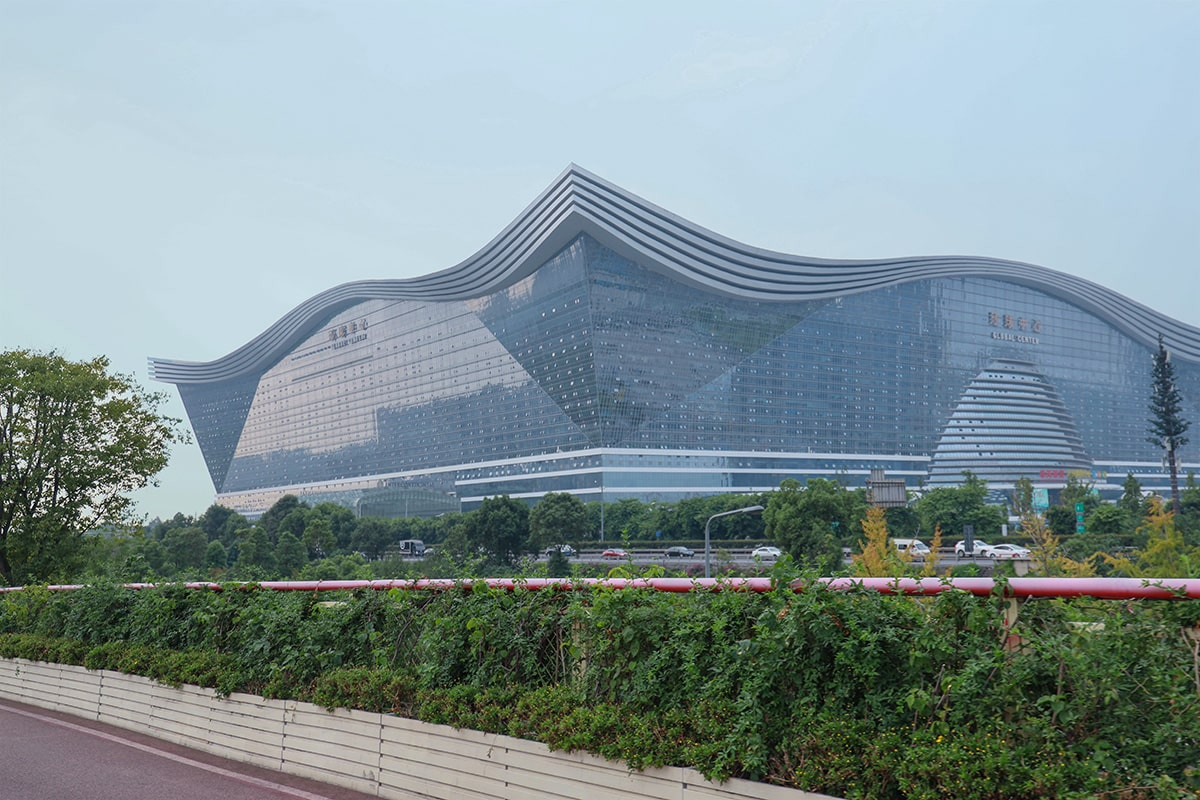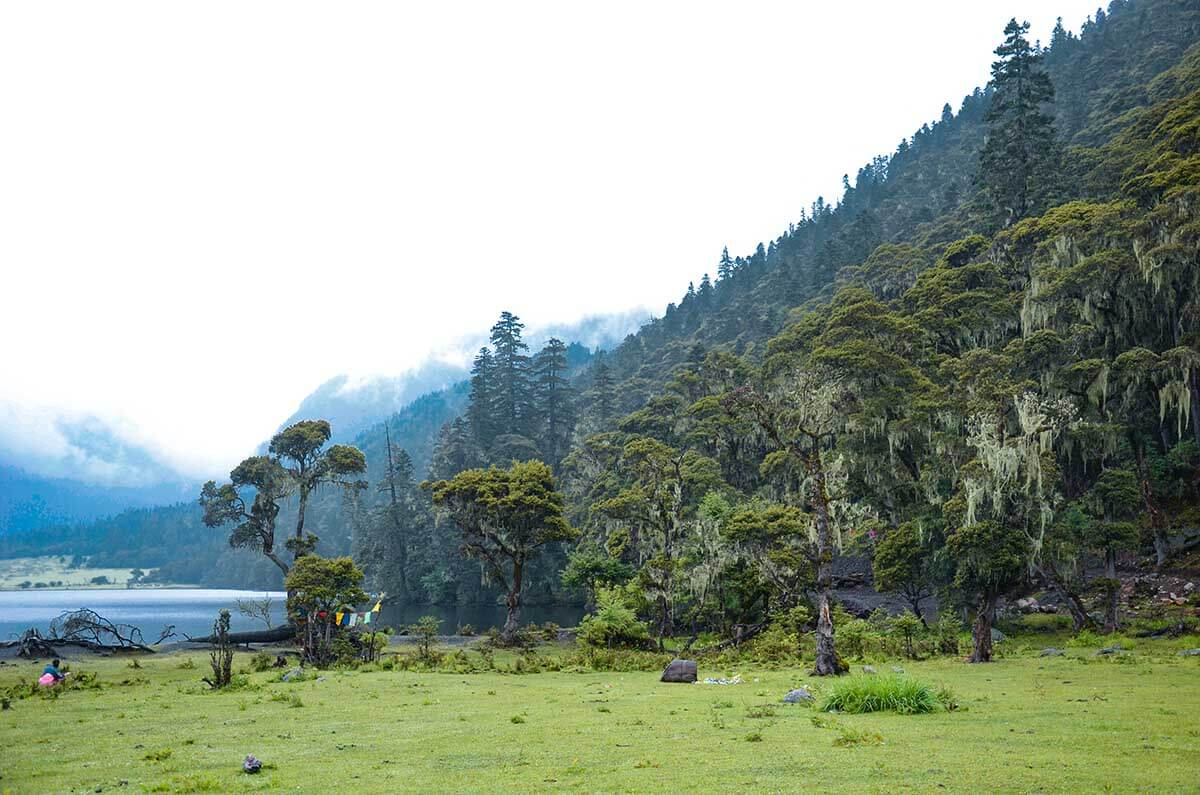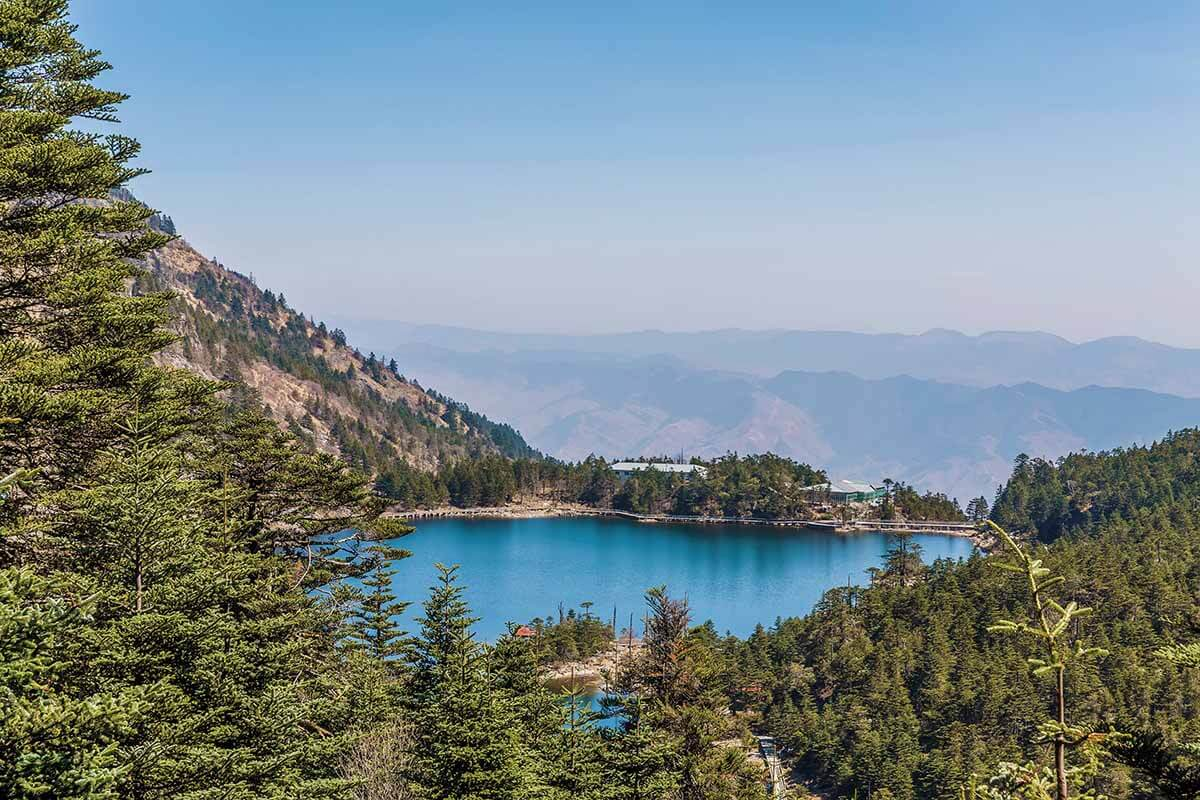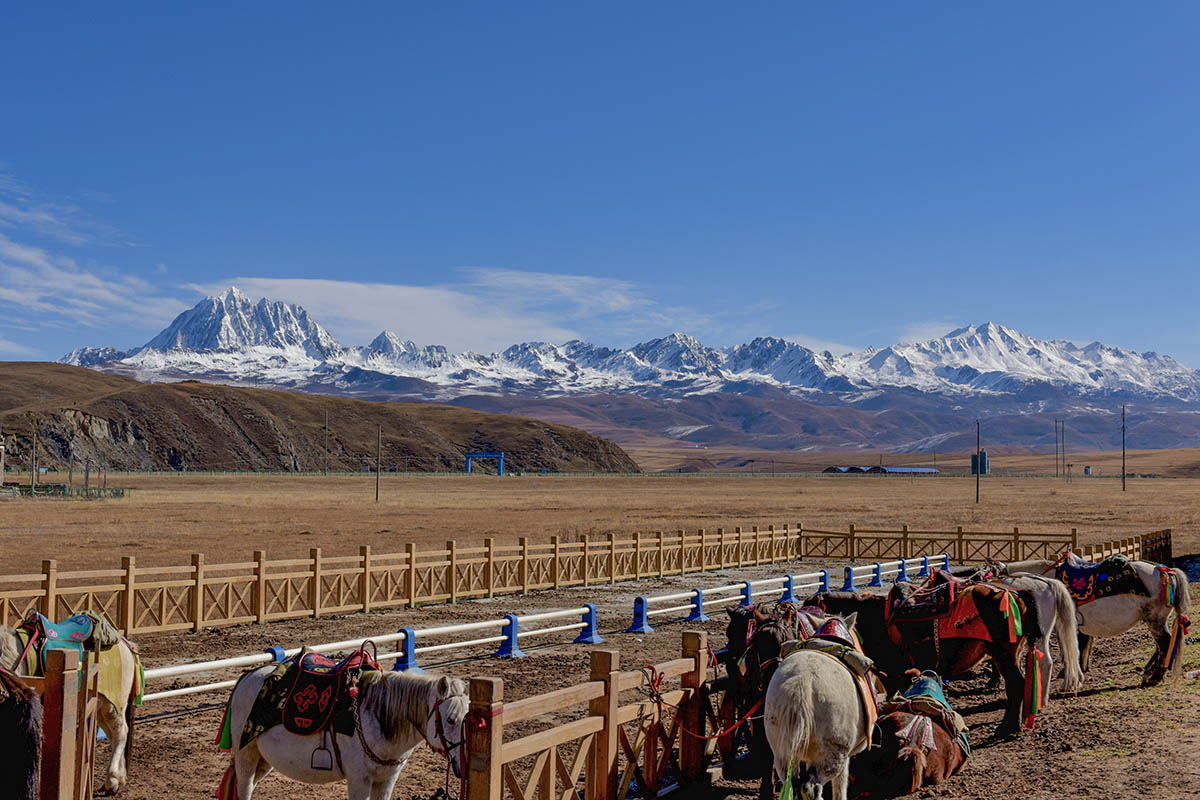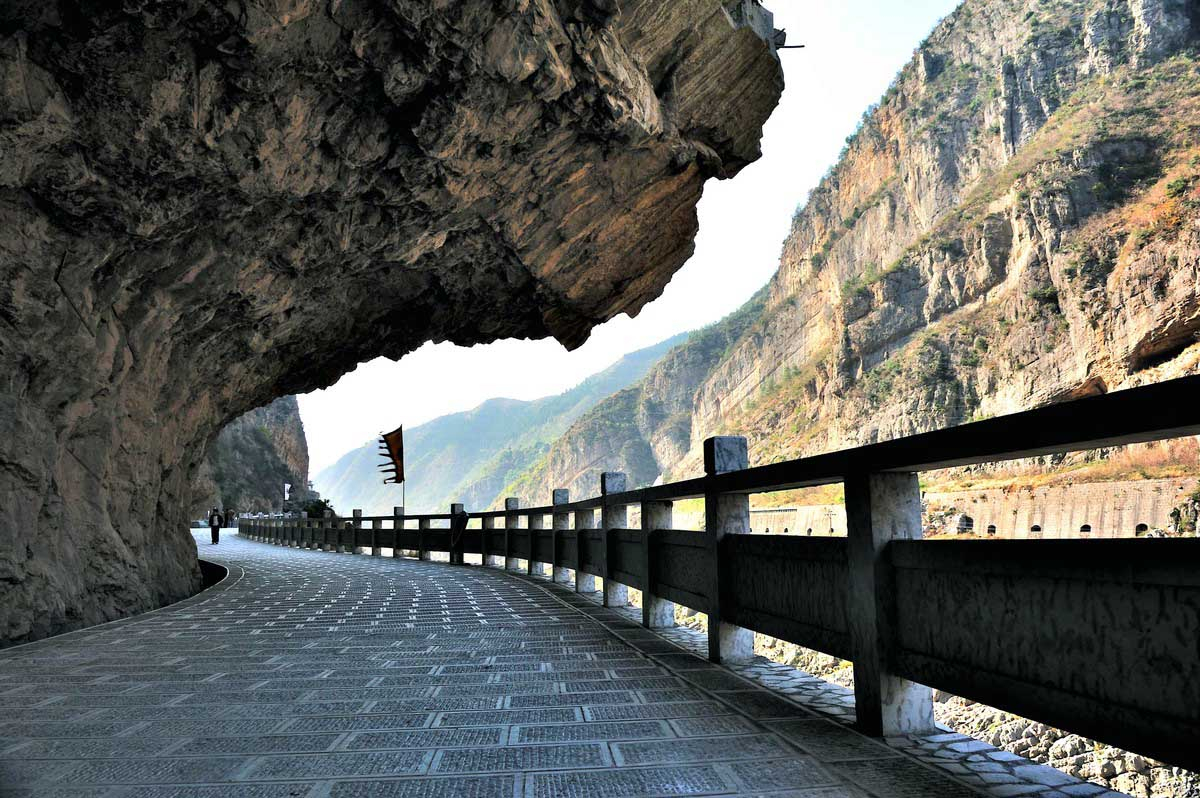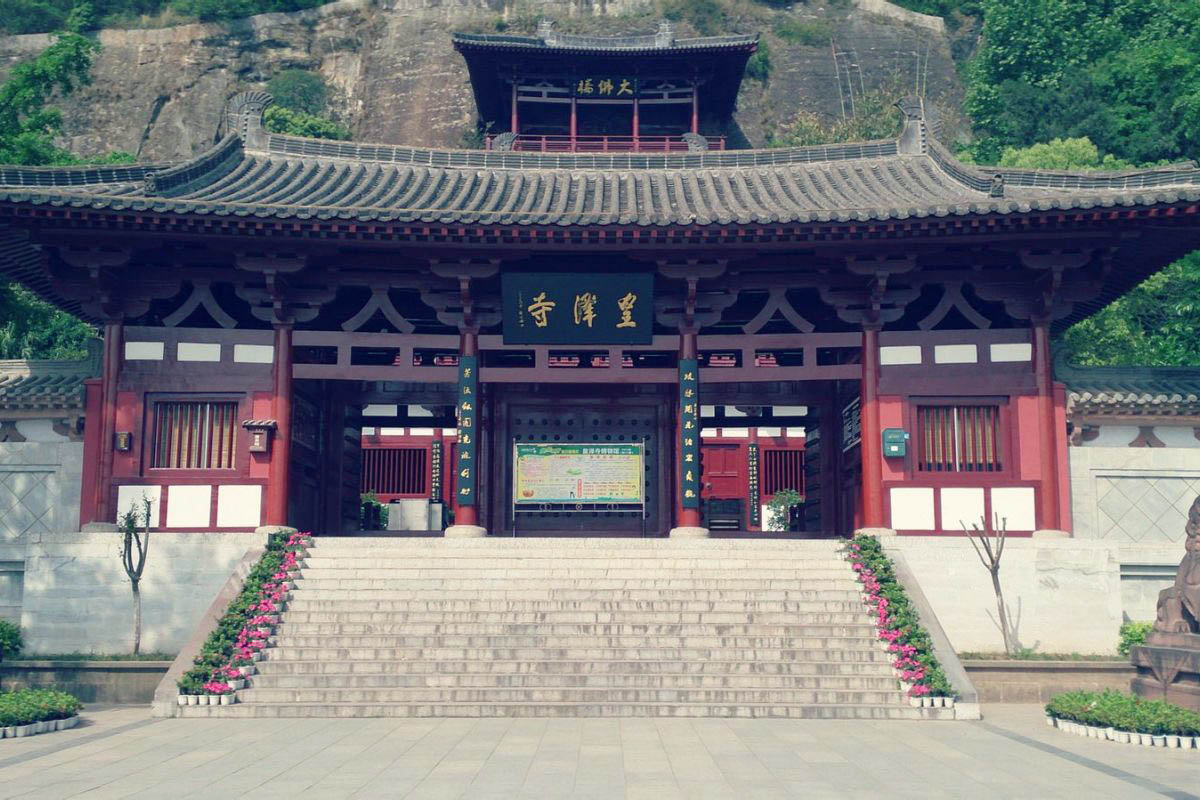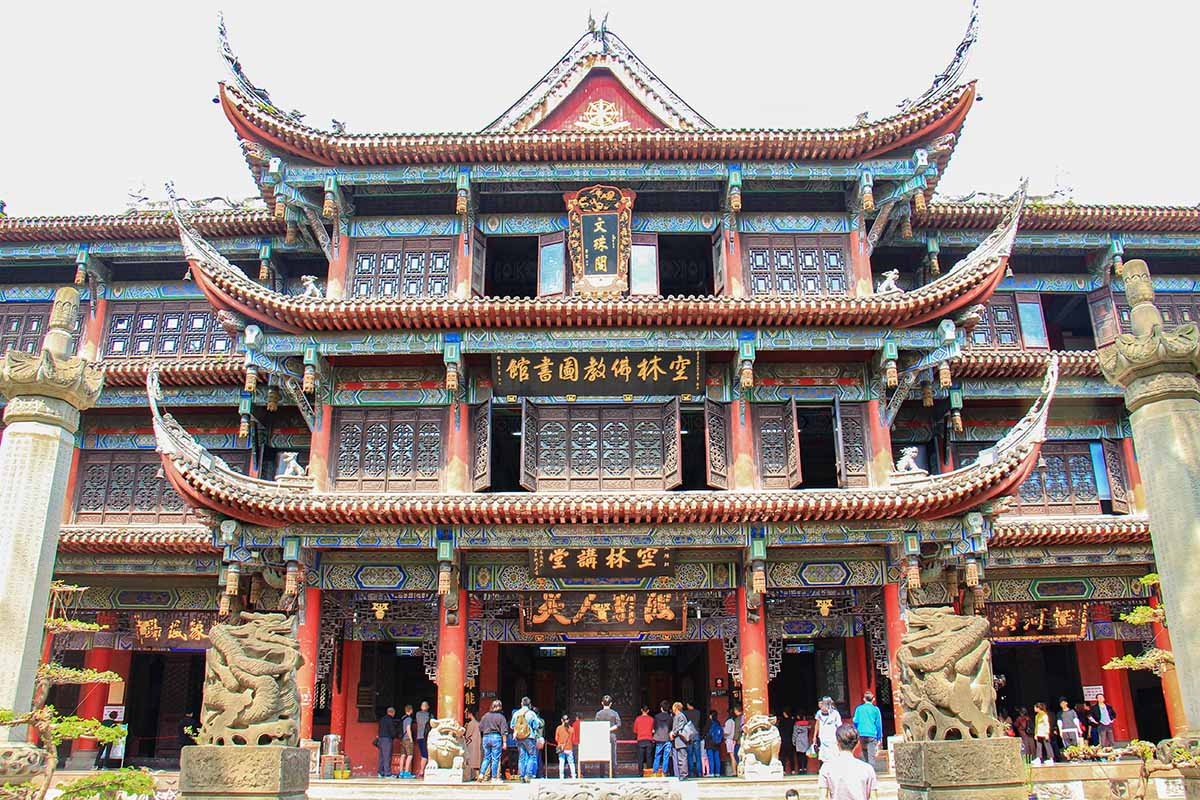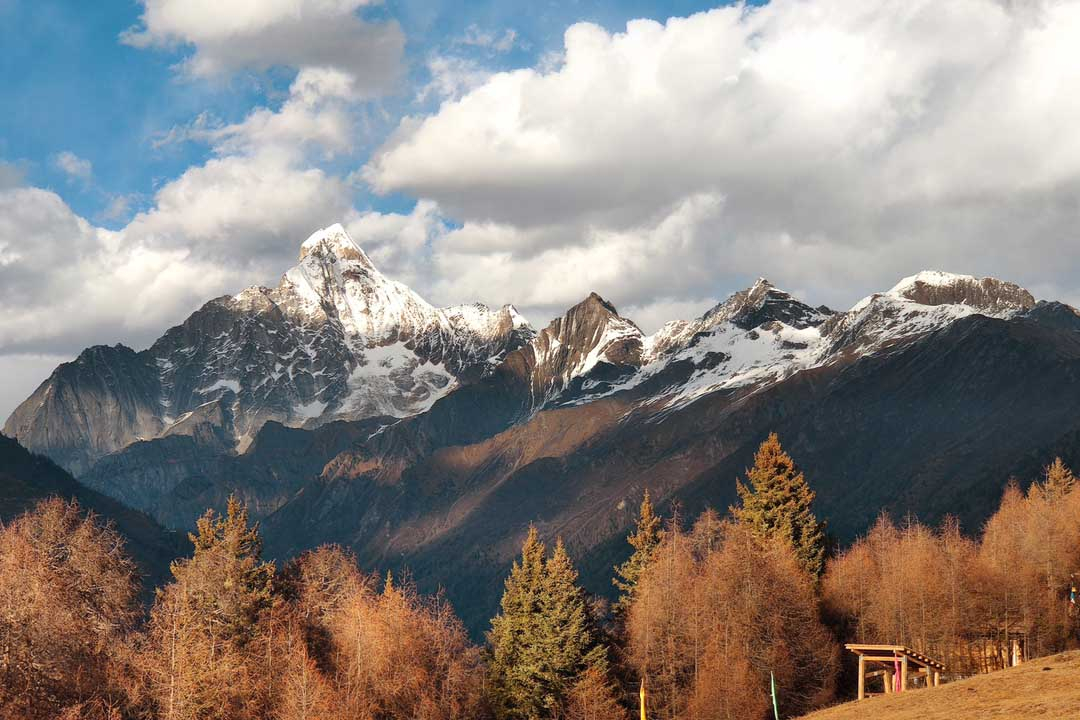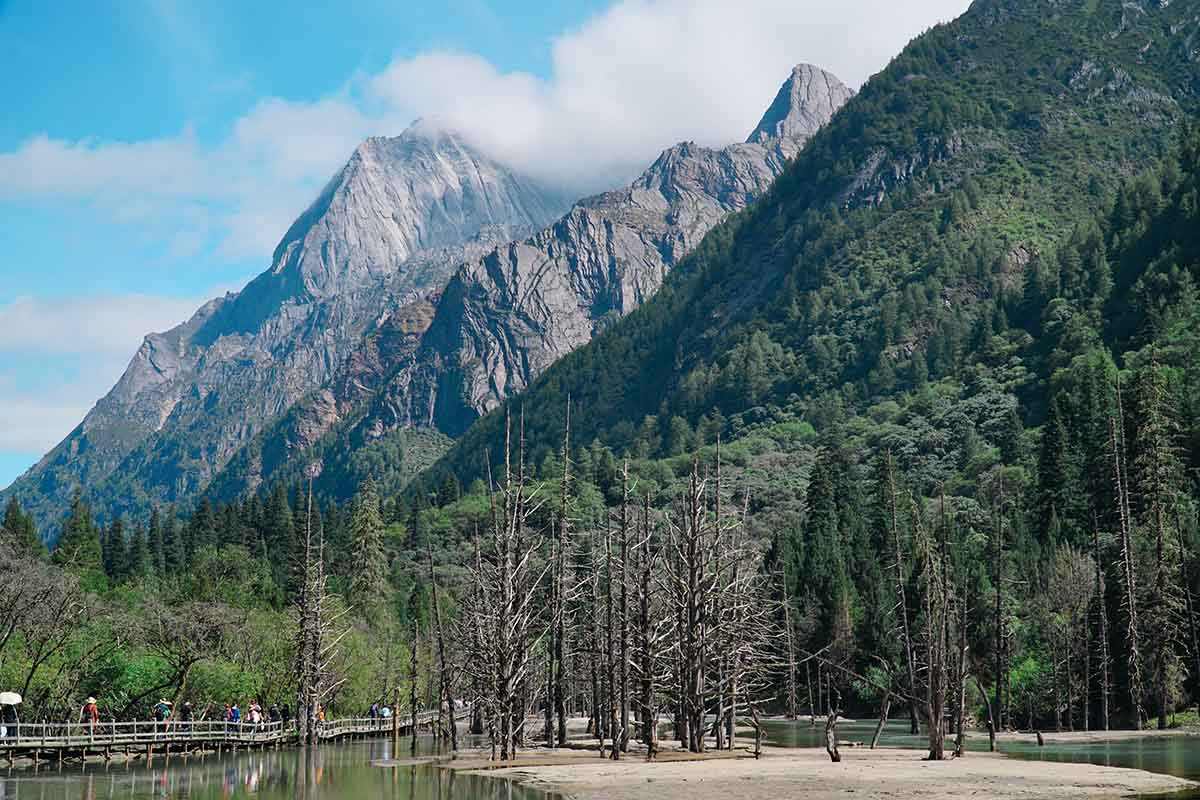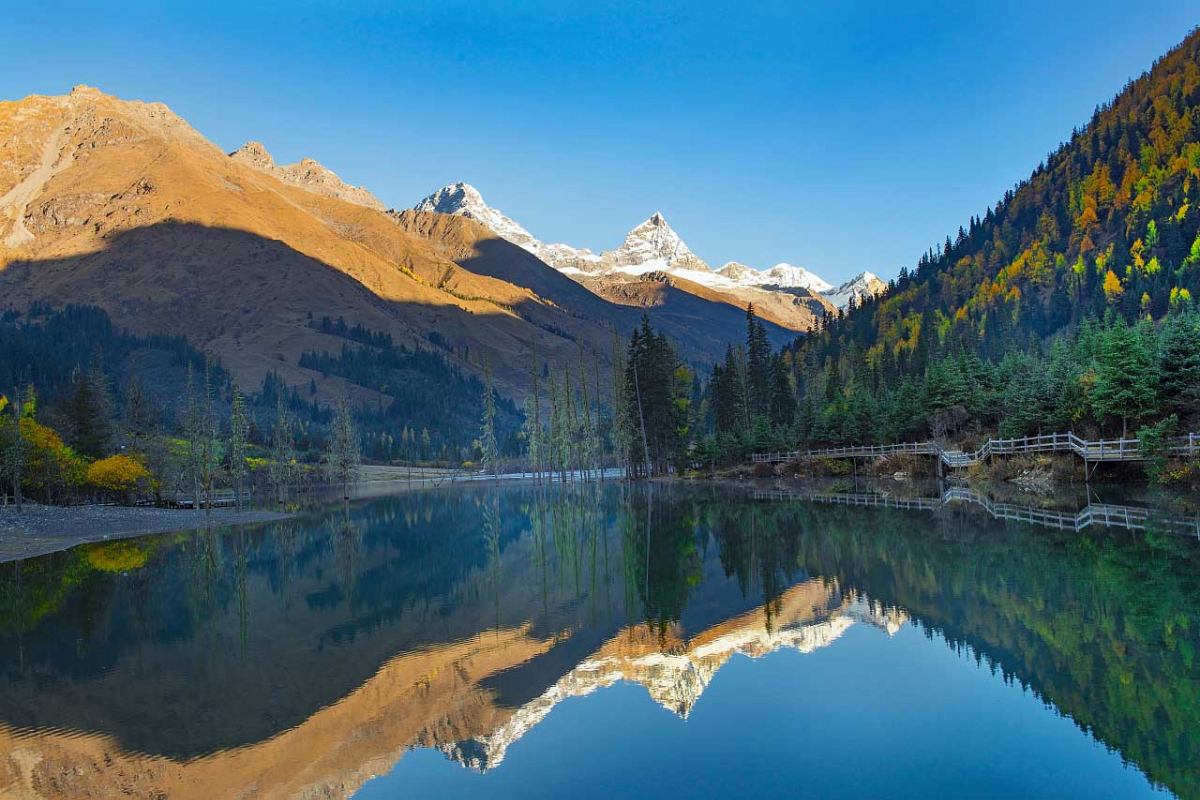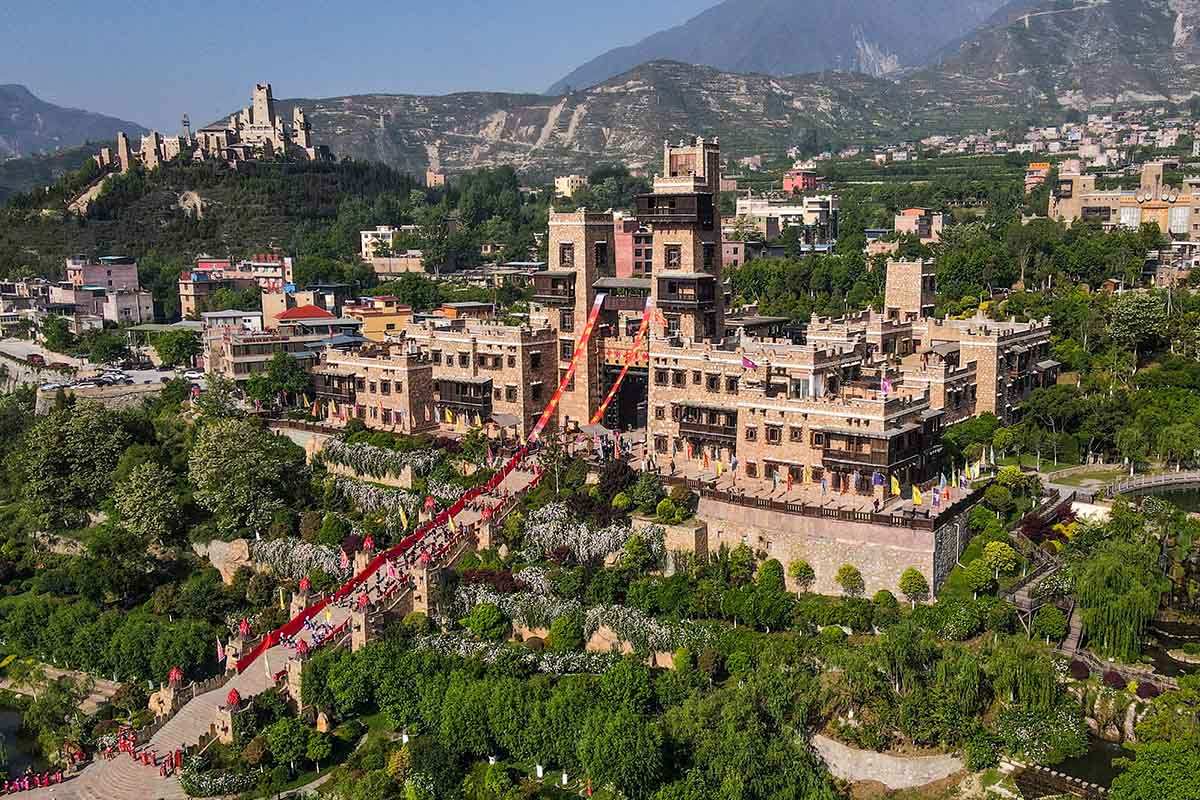Jiuzhai Valley
Chinese name: 九寨沟(Jiu Zhai Gou)
Location: Jiuzhai Valley Guan Li Ju, Zhang Zha Zhen, Aba Zhou, Sichuan Province.
Ticket: Entrance ticket CNY169.00, sightseeing bus CNY90.00 during 01Apr-15Nov, Entrance ticket CNY80.00, sightseeing bus CNY80.00 during 16Nov-31Mar.
Estimated tour time: 1-2days
Recommended time to visit: May-Oct, especially Oct to see colorful leaves
Nearby attractions: Fairy Pool, Huanglong Scenic spot, Mouni Valley, Songpan Ancient Town, etc.

Called Dzitsa Degu in Tibetan, Jiuzhai Valley or Jiuzhaigou National Park is located in the Aba Tibetan and Qiang Autonomous Prefecture of Sichuan Province, South Western China. It was declared a UNESCO World Heritage Site in 1992 and it belongs to the category 5 in the IUCN system of protected area categorization. Jiuzhai Valley literally means “Nine Village Valley” and is named after the nine Tibetan villages scattered throughout the park. There is evidence of people living in the national park up to 3,000 years and the local people still hold onto many of their traditional ways of life. The human population of the park is just over 1,000 which comprises of over 110 families.
The superb landscapes of Jiuzhai Valley are particularly interesting for their narrow conic karst land forms and spectacular waterfalls and lakes. There are over 220 bird species found in Jiuzhai Valley as well as a number of endangered plant and animal species, including the giant panda, Sichuan golden monkey and the Sichuan takin.
Jiuzhai Valley is part of the Min Shan mountain range on the edge of the Tibetan Himalayan Pletau and stretches over 720 sq km (72,000 hectares) with an extra buffer zone of 598 sq. km (60,000 hectares). The Min Mountains are one of South West China’s most important biodiversity typezones. The elevation of the national park ranges from almost 2,000m (6,500 feet) at the entrance to over 4,500m (14,760 feet) on the mountain peaks and the series of forest ecosystems are stratified by elevation.
More than just spectacular scenery, Jiuzhai Valley National Park is home to nine Tibetan villages, over 220 bird species as well as a number of endangered plant and animal species, including the giant panda, Sichuan golden monkey, the Sichuan takin and numerous orchids and rhododendrons.
Jiuzhai Valley is locally known as Jiuzhaigou (Chinese for “Nine Village Valley”). It is a national park located in the Min Shan mountain range, Northern Sichuan in South Western China. It is best known for its fabled blue and green lakes, spectacular waterfalls, narrow conic karst land forms and its unique wildlife. It was declared a UNESCO World Heritage Site in 1992; the park joined the Man and Biosphere Conservation Network in 1997 and has also received IUCN and ISO 14,001 accreditations.
It is China’s premier national park and is located at elevations ranging between 1,990m (6,529 feet) to 4,764m (15,630 feet) above sea level. Located on the edge of the Tibetan Himalayan Plateau in Northern Sichuan Province it is easily accessible by direct flights from Beijing, Shanghai, Xian, Chengdu, Chongqing and Hangzhou. Jiuzhai Valley provides spectacular scenery throughout the year making it one of China’s most treasured scenic sites.
● Spirit of Jiuzhai Valley
Waters
Water is the spirit of Jiuzhai Valley. There are 114 individual Lakes in the park that span over 1,000m in altitude. It is said that these lakes were formed when a young boy presented the goddess Woluo Semo with a mirror made of wind. The goddess breaks the mirror and 114 pieces fall to the earth and the sparkling gem-like lakes of Jiuzhai Valley are formed. “The Fairyland of Earth” was created.
Waterfalls
There are 5 major waterfalls and numerous smaller waterfalls throughout the park. The Nuo Ri Lang Waterfall is the widest travertine topped waterfall in the world. All of Jiuzhai Valley’s scenic sites were formed as a result of the build up of snow during the Quaternary period which led to the development of Jiuzhai Valley’s glaciers. These glaciers subsequently cut and carved out the valley sides and floors creating Jiuzhai Valley as we know it today.
Forests
Forests cover more than half of the scenic area and much of the area not covered is above the tree line. As seasons alternate, the colours of the deciduous species change the face of Jiuzhai Valley. Jiuzhai’s tree and shrub species include firs, spruces, honeysuckles, azaleas, rhododendrons and bamboo.
Tibetan Culture
The local people still hold onto many of their traditional customs and culture. Local food and drink traditionally include barley, yak meat and mutton. Barley is the main staple which is used for yak butter tea, barley wine, barley bread and in other dishes. The main religion practiced by the Jiuzhai Valley local population is the pre-Buddhism Bon or Benbo-Sec religion. It was introduced to the Aba Prefecture in the 2nd century B.C. In the 7th century, Tibetan Buddhism was introduced to the region. Although through numerous conflicts Buddhism did become prevalent, the Benbo Sec religion has survived and developed, and is now recognised as one of the five sects of Tibetan Buddhism.
Frozen Waterfalls
The main attraction of the “Winter Wonderland” scenery is the magnificent, frozen waterfalls, in particular the Pearl Shoals and Nuo Ri Lang waterfalls. The magnitude of these giant blue icicles have led to many fairy tale like descriptions of winter in Jiuzhai Valley.
● Shuzheng Valley — See Most of the Lakes and Waterfalls
Shuzheng Waterfall is the most representative and important attraction in Shuzheng Valley. It's 62 meters wide and 15 meters high, and is the first waterfall after the river enters the valley. The lakes upstream among the shoals and stepping stones make the waterfall more magnificent.

Shuzheng Lakes
Shuzheng Lakes includes 19 lakes of different sizes, featuring different colors, and looking like terraced fields.
Nuorilang Waterfall
Praised as the most beautiful waterfall in Jiuzhai Valley, Nuorilang is also the widest (300 meters). It is at the center of Shuzheng Valley, and regarded as symbolic of Jiuzhai. It is more fabulous in the morning sunshine, especially if attended by a rainbow in the sky. In winter it's a frozen feast for the eyes, appearing as if it's hanging on the rocks.
● Rize Valley — Explore the Habitat of the Giant Panda
Rize Valley is the elite part of the park. It offers an astonishing diversity of spectacular landscapes. Its main attractions include virgin forest, Strawberry Lake, Swan Lake, Panda Lake, Five Flowers Lake, Arrow Bamboo Lake, Pearl Beach Waterfall, and Mirror Lake.
Panda Lake
Giant pandas in Jiuzhai Valley used to love living near Panda Lake. They came here to drink, have fun, and look for food. Fish can be seen in this clear lake, even some rare species.
Five Flowers Lake
Multicolored and famous Five Flowers Lake is named after the flamboyant algae in the water. It looks magical and marvelous. It's actually said to have magical powers, so that the plants watered by the lake grow with particular vigor. And they do!
Arrow Bamboo Lake
Scores of tall bamboo canes, the favorite food of the giant pandas that used to stroll around Panda Lake, grow around Arrow Bamboo Lake. Reflections of bamboo and the surrounding mountains in the water create a wonderful sight!
The lake flows through the forest, and divides into many small branches, finally ending at Arrow Bamboo Waterfall. In 2001, the famous movie Hero, directed by Zhang Yimou, was shot amongst the charming scenery here.
Pearl Beach Waterfall
Pearl Beach is different from the other lakes in Jiuzhai Valley. It's a wide sandy beach with a bridge over it. Torrential waters from the lakes run under the bridge and crash into some rocks, causing waves to break on the beach. After another 200 meters rapids rush down over a steep cliff. Pearl Waterfall is massive and stirring, well worth photographing.
● Zechawa Valley — See the Largest Lake
Zechawa Valley is about 18 km long, at the highest altitude in the park. The scenery here is just as attractive as elsewhere in Jiuzhai.
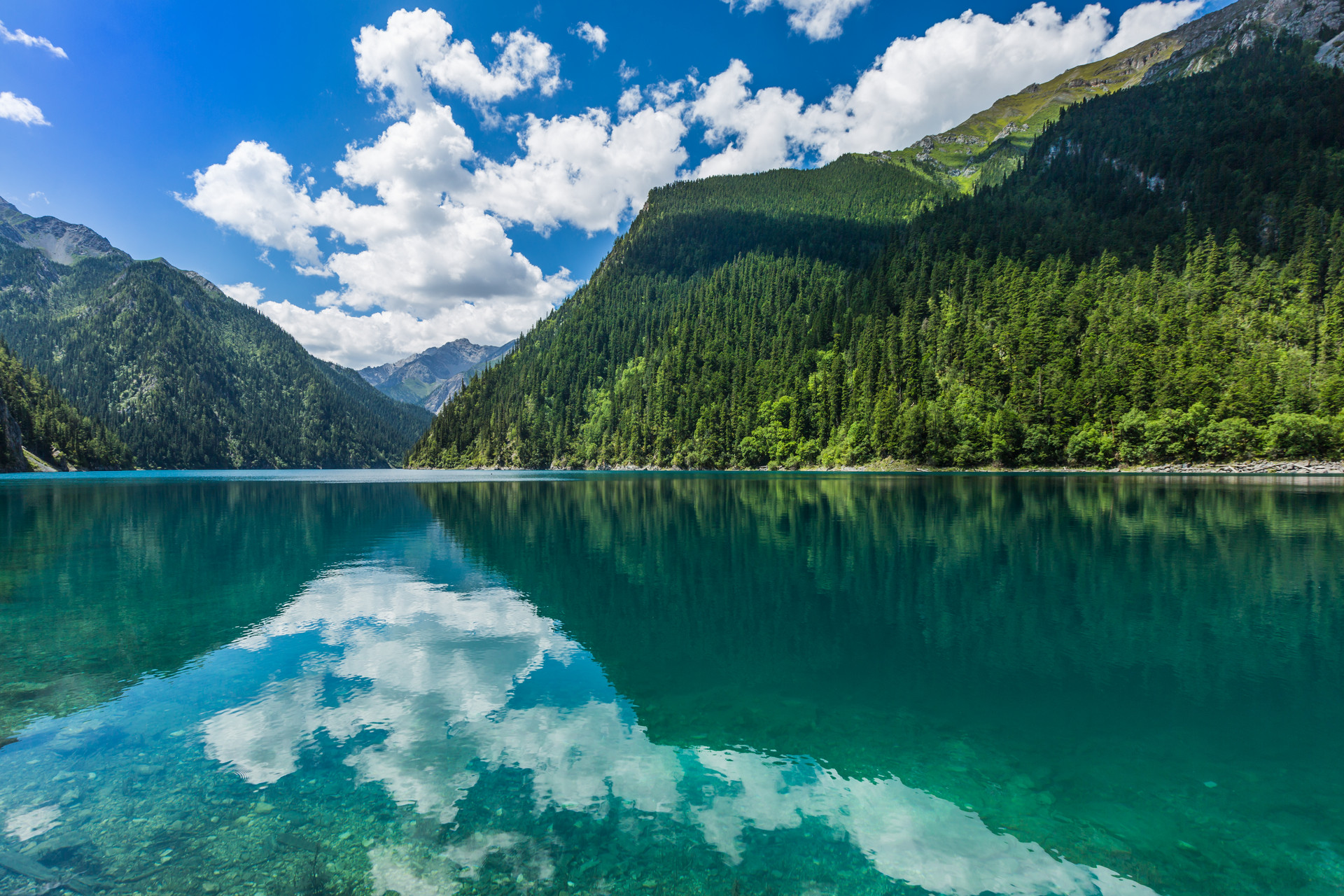
Long Lake
Long Lake is the largest lake in the park. It is dark blue, at the end of Zechawa Valley, facing a giant snow mountain and circled by cedars. The surrounding mountains are snow-capped for much of the year. Surveyed from afar, Long Lake looks like a large piece of extraordinary jade nestled among the mountains.
Five-Colored LakeFive-Colored Lake
Upper Seasonal Lake, Middle Seasonal Lake, and Lower Seasonal Lake are closely connected. Upper Seasonal Lake is surrounded by cliffs. In fall, the waters in the lakes are blue, due to the ample leaves; in spring and winter they are green. In summer, the lakes dry up, and you can see some grass growing on the lake beds among lots of small rocks.
Five-Colored Lake
Five-Colored Lake may be the smallest lake in Jiuzhaigou, but it can still amaze you with its spectacular and fancy colors. When the sun comes out, the lake is even more fabulous and bright, rippling and shining.
● Jiuzhai Valley Travel Tips
Altitude
The elevation of the Jiuzhai Valley National Park ranges from 1,990m (6,529 feet) at the entrance to 4,764m (15,630 feet) at the peak of Ga Er Na Feng Mountain.
Although altitude sickness is rare, visitors should be aware of the elevation and expect to be out of breath quicker than you normally would be at lower levels. Some preventative measures to the affects of altitude sickness are to drink plenty of water and carry some aspirin in case it is required. Having said this you will never be too far from a water source or from other people. Busses run constantly between the scenic spots and you can hop on and off freely during the day with your bus ticket. Oxygen supplies are available for a nominal fee at the medical center at the park entrance.
Climate
Jiuzhai Valley has a subtropical to temperate monsoon climate. Valleys are warm and dry, the middle mountain slopes cold and damp. At Nuo Ri Lang Waterfall & visitor centre at an altitude of 2,400m (7,875 feet) the mean temperature is 7.3ºC, the mean January temperature is -3.7ºC and the mean July temperature is 16.8ºC. Although the official temperatures are not too high, summer temeratures often reach 30ºC.
The total annual rainfall is 761mm but in the cloud forest between 2,700m and 3,500m it is at least 1,000mm. 80% of the rain falls between May and October as the monsoon moves up in the valley giving mild, cloudy, moderately humid summers. Above 3,500m the climate is colder and drier. Snow falls vary but usually falls between October and April with December to February receiving the heaviest falls.
● Best time to go
The best time to visit is September through early November, when you ‘re most likely to have blue skies and blazing autumn colors to contrast with the turquoise lakes.
Summer (June to August) is the busiest time due to the summer holiday and also the rainiest time to go.
Spring (March to May) can be cold (1°C/34 °F ~ 14°C/57°F), but still pleasant with fewer tourists around.
Winter (Late November to February of next year) is frigid (-6°C/21°F ~ 7°C/45°F), but you can see dramatics ice-coated trees and frozen waterfalls. Huanglong Scenic Area may be closed in winter. If you would like to visit Huanglong and Jiuzhaigou together, try other warmer time.
- HOTEST
- RECOMMEND
